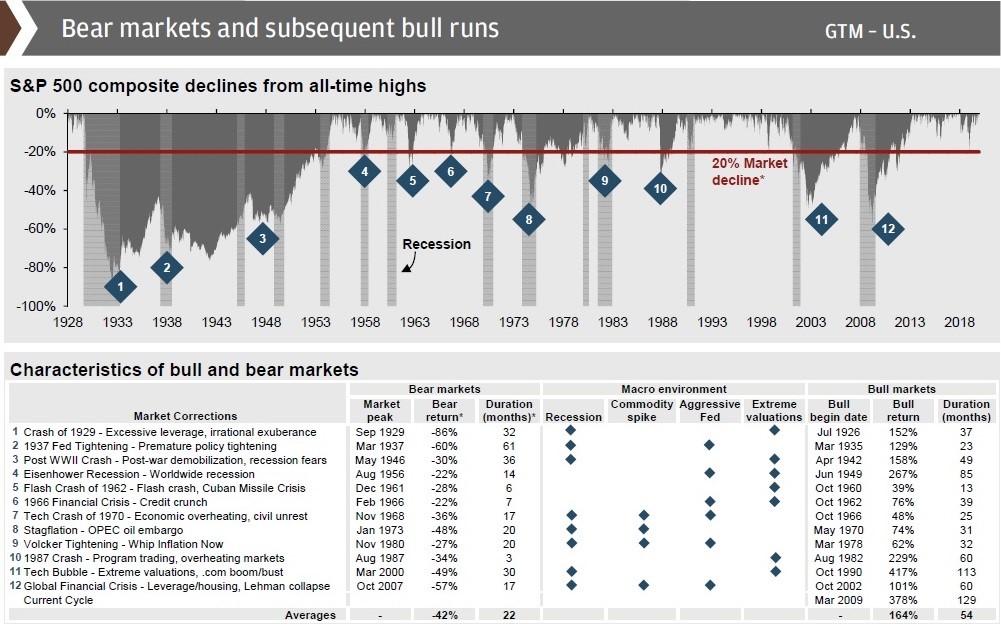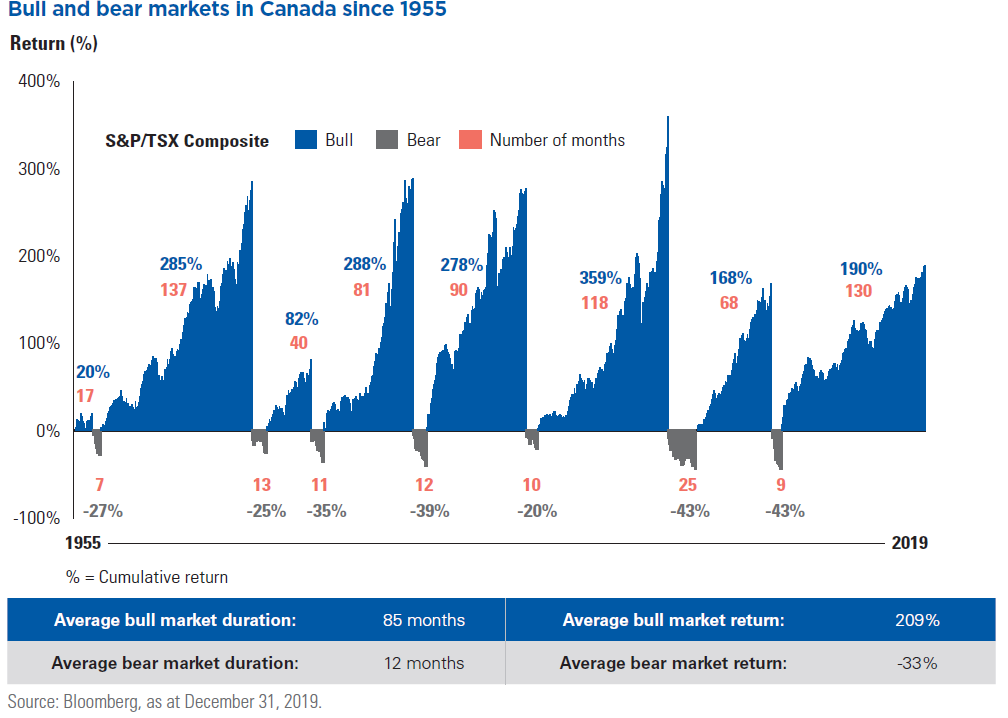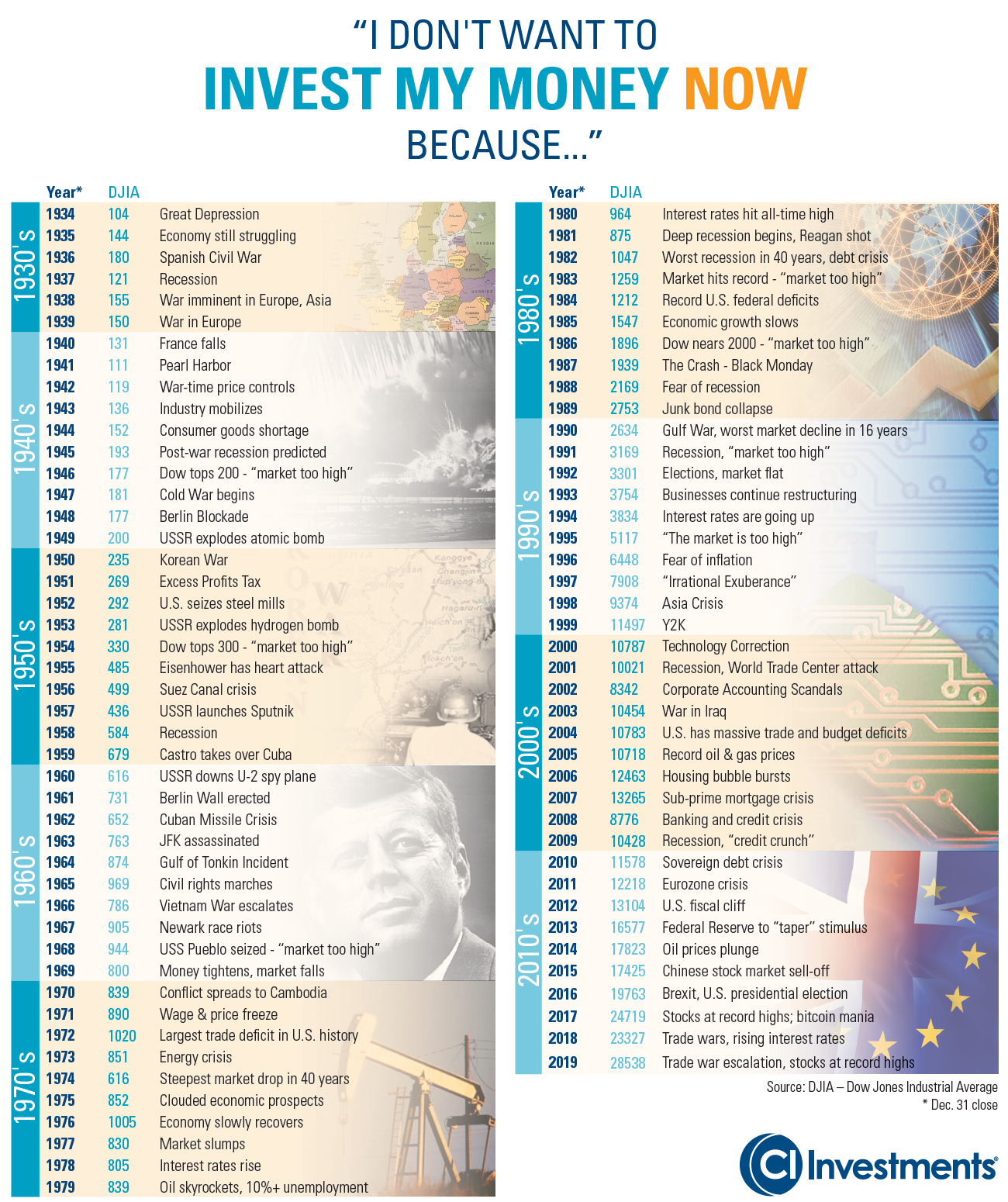“Please keep your hands, arms and legs inside the vehicle at all times.”
You can read Part I of our Coronavirus coverage here
You can read Part II of our Coronavirus coverage here
You can read Part III of our Coronavirus coverage here
Before we begin, we recognize that we are in the midst of a humanitarian crisis that is of deep concern to all of us – both professionally and personally. All investors have been impacted by COVID-19, but we are confident that markets will recover in the long run. Besides investment returns, there are employees or businesses who have seen large drops in revenue due to COVID-19. Our thoughts are with you during this time.
What’s Happened Thus Far?
For a detailed update of the past three weeks, please refer to parts I-III of our COVID-19 coverage.
A brief recap of the past three weeks is as follows:
Week 1 (February 24): Acceleration of COVID-19 cases outside of China. DOW Jones (DOW) declines from 29,000 to 25,000 in one week.
Week 2 (March 2): Emergency rate cuts by the Canadian (BoC) and U.S. Central Banks. Seesaw week for the DOW, which remains around the 25,000 mark.
Week 3 (March 9): OPEC flooding the market, massive declines in the energy sector, U.S. imposes Europe travel ban, restrictions on public events and shutting down of sports leagues, another emergency rate cut by the BoC. DOW Declines from 25,000 to 21,000 from Monday to Thursday, but rallies 10% to close the week at 23,185.
Wednesday, March 11 marked the official end of the bull market, when markets breached the 20% decline mark for the first time in 11 years and one day. It took just 19 sessions to usher in the bear market. The previous bear market record was 42 days during the great depression.
One day later, on Thursday, March 12, the TSX declines 12%, the single largest drop for the Canadian index in 80 years, and the DOW dropped another 8%.
Therefore, markets declined 30% in 20 trading days, or around a month. In contrast, it took almost a year for markets to correct 30% during the 2008 Financial Crisis and about 2.5 years during the 2000 Dot-Com Bubble.
Today, markets rallied 10% as expectations climbed that policymakers would provide stimulus to help contain the economic impact of the coronavirus outbreak.
Has This Ever Happened Before?
Yes, in the past 100 years, the U.S. market has seen 12 previous cases of bear markets. The average drawdown during a bear market is 42% and the average recovery time is 22 months:

Bull (rising) markets also last significantly longer than bear (declining) markets:

Market drops are never pleasant, but we’ve been cautioning against the aging market cycle for a while and it should not come as a major surprise. Volatility is part of long-term investing and a decline of this magnitude should be expected once or twice a decade. You combine an 11-year bull market, a euphoric rally during Q4 2019, a slowing global economy, a yield curve inversion last year, 2020 being an election year, and it all comes together to create this perfect storm. The Coronavirus was just the trigger required for this to happen.
The only unique aspect of this decline is the speed at which it has occurred. As mentioned above, it took only one month for it to correct 30%, compared to 1 year or 2.5 years during the two previous bear markets.
For more information on market declines and how to handle them, please refer to the following helpful link by Capital Group:
Have My Investments Declined 30%?
No. We construct diversified portfolios of equities and fixed-income, favoring higher-quality investments to limit downside in these moments.
For retirement portfolios, we took significant action in the past 1-2 years to reduce overall portfolio risk. This includes increasing fixed-income content, selling higher-risk equity categories (like emerging markets) or upgrading equities to dividend or low-volatility funds.
After Thursday, growth-oriented portfolios were down approximately 21% and retirement income portfolios were down about 17%.
Following today’s 10% rally, those same portfolios will be down 15% and 11%.
What do I do? Buy, Sell, Stay the Course?
I think we all know the answer to this one. Selling during a market decline turns a temporary loss into a permanent one. Timing a re-entry is difficult. Markets seesaw on the way down and the way up. There is no clear declining trend or clear recovery trend. The likely result of selling during a market decline is absorbing a significant amount of downside and missing out on a significant amount of upside. You don’t have to add money to your investments during these events, but we strongly advise against selling purely for market-timing purposes.
For certain investors, especially those in the accumulation phase of their investment careers, this presents a potential buying opportunity. The market has created a dislocation, and this is the time to take advantage of it. You might not be validated with a purchase next week or next month, but we cannot point to a time when a market downturn did not give investors an opportunity to generate good mid to long term returns.
Odette & Terry contacted me yesterday to make a large purchase in their portfolios – all equities.
We’ve been getting updates from every single fund company. Portfolio Managers are taking advantage of the volatility, either by adding to existing positions or taking new positions in high quality companies that reach attractive valuations and have room for growth.
Isn’t it a bit early to be talking about buying opportunity? U.S. cases are just ramping up, and it looks like we’ll be in a recession later this year.
Keep in mind that markets are forward-looking. An escalation of COVID-19 cases in the U.S. and a recession have been priced in after this week. That’s not to say there couldn’t be a fresh round of surprising or worst-than-expected data to come out which might lead to continued declines.
When we say, “buy low”, we don’t mean “buy at the very lowest”, because we naturally don’t know when that will be. As stated earlier, you might not be validated with a purchase next week or next month, but history shows you will be rewarded in the medium or long run.
Also, things are evolving very rapidly, and the daily market swings are significant. If you purchased last week, you bought anywhere between 15% and 20% off. If you purchased yesterday, you bought at 30% off. If you purchased today, you’re buying at 20% off.
If you’re at all interested in making a purchase, please contact us and we’ll discuss it further.
Will the Market Recover?
The market has seen it all in the past 100 years:

There is no doubt that the recent market reaction has been severe, as all equity markets corrections are. Although markets eventually recover, as they always do, the intensity of the drawdown as well as the length could have an impact on investor’s psychology. That could potentially cause an investor to make spur-of-the-moment decisions. I used the following quote from investment blog Humble Dollar last week, and I will use it again this week:
“Trust me: No matter how much you fret over [coronavirus] issues, you will not come up with answers that will help you make more sensible investment decisions. So what should you do? … First, if history teaches us anything, it’s that great investment gains go to those who are diversified, optimistic and patient… the only folks who should feel any pressure to sell are those who have money in the stock market that they’ll need to spend in the next five years.”
Periods of extreme market volatility are a severe test of investors’ emotional equilibrium and the potential for emotional mistakes climbs significantly. Many times, the best thing to do is nothing, as hard as that may be.
We also realize that during this time of severe market volatility, you may have questions about your investments and what actions to take given the extreme uncertainty ahead. As always, there is nothing more important to us than our partnership with clients, and we stand ready to support you. Please don’t hesitate to reach out with any questions.
Stay safe and healthy!
